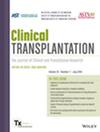Development and Evaluation of an Inpatient Rehabilitation Model of Care Tailored to Solid Organ Transplantation
Abstract
Introduction
Postoperative rehabilitation is essential to post-transplantation recovery and a key component of comprehensive transplant care, with inpatient rehabilitation providing intensive, interdisciplinary support to restore function and enhance quality of life. In 2019, the Brooks Rehabilitation Transplant Program (BRTP) was implemented to address the specialized rehabilitation needs post solid organ transplantation as an interdisciplinary, comprehensive, and tailored model of care.
Methods
Five main pillars comprise BRTP: (1) organizational commitment; (2) collaborative relationship with acute care providers; (3) early identification of appropriate patients; (4) interdisciplinary rehabilitation care tailored to transplant needs; and (5) continuous evaluation of quality outcomes. A retrospective observational cohort study evaluated both implementation and clinical outcomes over the program's first 5 years. Implementation outcomes included feasibility, fidelity, and sustainability. The primary clinical outcomes were changes in the CMS standardized functional assessment Section GG Mobility and Self-care scores. Wilcoxon signed rank sum test was used to compare admission and discharge scores. Secondary outcomes included IRF length of stay, discharge to community, acquired pressure injuries, falls, and feeding tube removal.
Results
Between January 2019 and December 2023, 202 solid organ transplant patients participated in BRTP. For the 154 completing their inpatient rehabilitation facility (IRF) stay, significant functional improvements were observed for the Section GG Mobility and Self-Care composite scores and across all individual functional items (p < 0.001). Ultimately, 82% of the cohort discharged to community, with eight returning to inpatient rehabilitation following an acute readmission and zero patients acquiring a pressure injury. Implementation outcomes indicated that the program was feasible, delivered with fidelity, and demonstrated sustainability over time.
Conclusion
The BRTP provides effective, sustainable, evidence-based approaches to improve function and quality outcomes following transplantation.


 求助内容:
求助内容: 应助结果提醒方式:
应助结果提醒方式:


